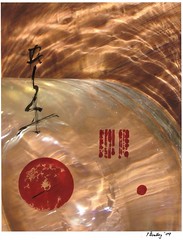Guided Movements, also called Spontaneous Qigong are part of my Taoist meditation practice. In the Sum Faht tradition, this practice is begun by standing, closing the eyes, and bowing to the four corners of the universe. Then, mentally, one requests guided movements. Next one waits for one’s internal energy to shift. You have to feel the energy or qi build until it is strong enough to move your limbs and body on its own accord. You must allow yourself to follow the energy, never rushing or anticipating. The mind must be kept out of the process.
Most Qigong practices or forms follow a specific pattern and sequence of movements. For example, in the Five Animal Play system movements of the deer, tiger, monkey, crane and bear are mimicked. Bone Marrow Cleansing or Eight Pieces of Silk Brocade will have other patterns of movement.
In spontaneous qigong the body may shake, gently sway, dance or reel, perform martial art moves, mimic any number of animals, or adopt a mudra-like pose. Movement can occur on one side of the body only, or be performed bilaterally. Whatever movement appears is deemed appropriate for that person at that moment given his or her own, unique physiological and psychological needs.
Often the effects of guided movements can feel very cathartic, allowing one to release deeply held emotions. Afterwards one may also feel relaxed and harmonious. The practice is one way to strengthen the body so that it can handle the flow of energy accessed in the deeper levels of sitting meditation.
The poet Rumi has written,
The spiritual path wrecks the body
And afterwards restores it to health.
It destroys the house to unearth the treasure,
And with that treasure builds it better than before.
Some schools of Taoism have emphasized the necessity of strengthening the body prior to instruction in meditation so that the fire and destruction, so beautifully described by Rumi, may be ameliorated if not avoided. A stronger body will also support a clearer psychology.
Saturday, June 10, 2006
Subscribe to:
Post Comments (Atom)


No comments:
Post a Comment